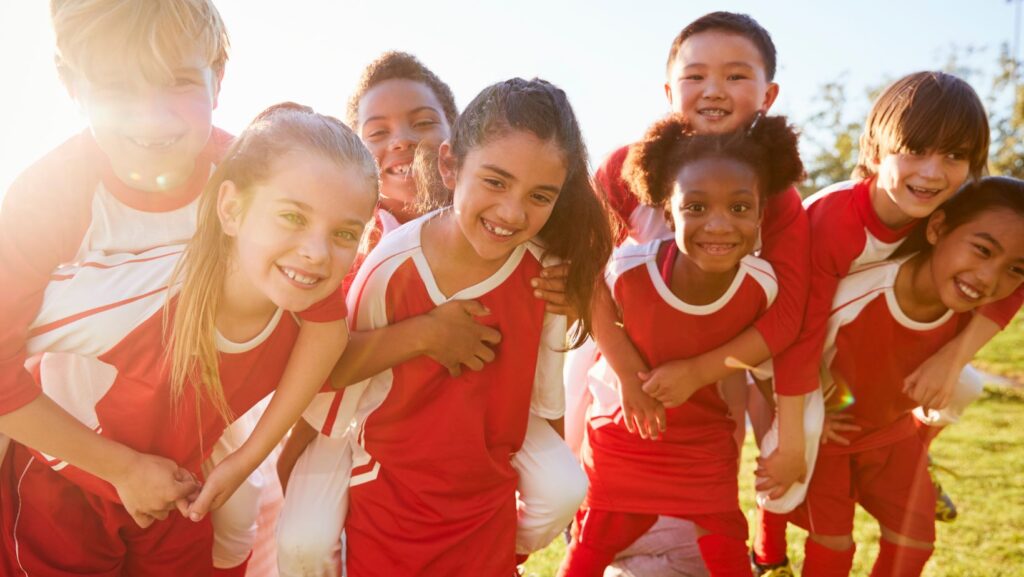Team sports in high school are more than just after-school activities; they’re a vital part of the educational experience. These activities foster teamwork, discipline, and leadership among students, offering a platform for personal growth beyond the classroom. From basketball courts to soccer fields, high school sports provide a unique environment where students learn to collaborate and push their limits.
Engaging in team sports helps students develop crucial life skills such as communication and resilience. These sports create a sense of community and belonging, as participants work together towards common goals. The camaraderie built through shared victories and challenges often leads to lifelong friendships and memories.
What is Team Sports In High School

Team sports in high school involve organized games played by groups of students. These activities include basketball, soccer, and volleyball among others. They provide an opportunity for students to work together towards a shared goal.
High school team sports promote collaboration as students coordinate strategies to win. This participation requires regular practices, where athletes hone skills and build camaraderie. Through team dynamics, students learn leadership by taking on roles such as team captain or assisting others in improving their performance.
Benefits Of Participating In Team Sports
Engaging in team sports during high school offers numerous benefits that extend beyond the academic environment. Students experience improvements in physical health, mental well-being, and social skills.
Physical Health Advantages

Participation in team sports enhances physical health by promoting cardiovascular fitness, strength, and flexibility. Activities like basketball and soccer require continuous movement, boosting endurance and muscle tone. Regular exercise reduces the risk of obesity and associated health issues such as diabetes and heart disease (CDC). Students who engage in team sports consistently achieve better physical health outcomes, improving both their current and future quality of life.
Mental Health Benefits
Team sports play a crucial role in improving mental health by reducing stress and anxiety. Physical activity triggers endorphin release, which positively affects mood and energy levels. In a team setting, students build resilience, develop problem-solving skills, and experience a sense of achievement. These factors contribute to increased self-esteem and lower depression rates. Safe and supportive team environments also provide emotional outlets, improving overall psychological well-being (APA).
Social Skill Development
Team sports foster social skill development by encouraging communication, cooperation, and conflict resolution. Students learn to work within a group, understanding the importance of shared goals and collective achievements. They develop empathy and respect for diverse perspectives, which prepares them for future personal and professional relationships. Success in team settings often leads to strong friendships and networks, offering support and enhancing social confidence.
Popular High School Team Sports

High schools offer a variety of team sports that engage students physically and socially. These sports include football, basketball, and soccer, each providing unique experiences and benefits.
Football
Football draws large crowds and a robust community spirit. Teams typically consist of offense, defense, and special teams, allowing students to specialize in specific roles. Players develop strategic thinking and physical strength through regular practices. With a fall season, schools often organize games weekly, culminating in championship competitions.
Basketball
Basketball emphasizes agility and speed on the court. Players participate in fast-paced games, enhancing coordination and teamwork. Teams play indoors during the winter season, offering both boys and girls an opportunity to compete. Regular drills and scrimmages improve skills like shooting and passing. The sport fosters a dynamic environment where students build endurance and quick decision-making.
Soccer
Soccer, played worldwide, promotes cardiovascular fitness and team synchronization. High school teams consist of 11 players, including a goalkeeper. The sport requires communication and spatial awareness, as players constantly adapt strategies. With both fall and spring seasons, students can engage year-round, enhancing stamina and resilience. Soccer’s inclusive nature encourages participation from a diverse range of students.



